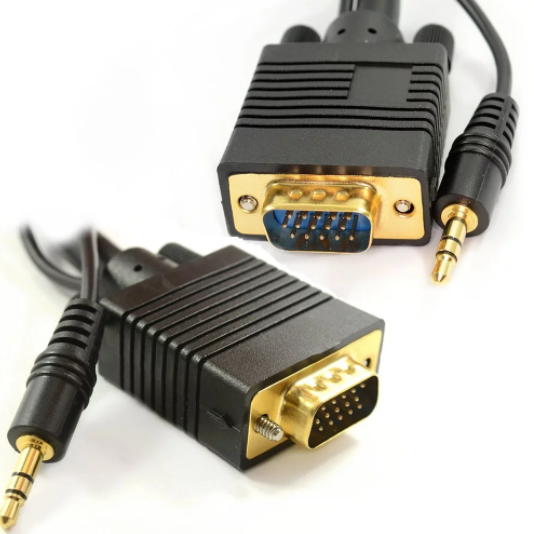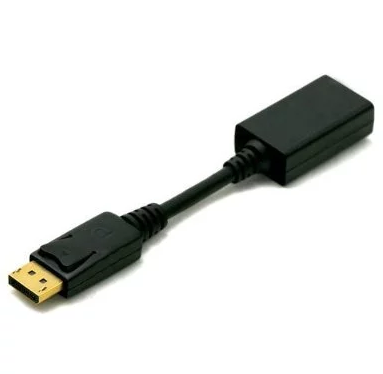Your laptop, phone, or tablet provides the perfect means to watch movies and other media on the go. However, when you’re at home, your big screen TV will retain an excellent reason to watch movies on your laptop or phone on the big screen TV.
You don’t need a smart TV if you have an old TV, a laptop and the right cable. We explain how to connect your Laptop to a TV in this step-by-step guide, covering HDMI, VGA, and wireless transmission methods.
• Connect Laptop to TV by plugging HDMI cable or VGA cable from the back of the TV to your Laptop output
Connect Laptop to an old TV using VGA
The simple way to connect your laptop to your TV is to use the VGA port on both devices. This is probably just an option for those of you with a Laptop over 4/5 years old.
VGA is just a video player, so you’ll have to come with a 3.5mm audio guide that you need to connect from the headphone socket out of the laptop to the audio at the TV port or external speaker.
Using VGA means Windows will automatically configure the settings as if you were using an HDMI cable. However, if you are having trouble, go to Control Panel> Display> Adjusting Resolution and follow the instructions above.
- Turn on the Laptop and TV.
- Connect your VGA cable to both your TV and Laptop (any order).
- Now do the same with your 3.5mm audio jack – use the headphone output port on the laptop and the audio on the TV or speakers.
- Go to Control Panel> Display> Adjust Resolution and make sure the TV is selected in the Display drop-down box.

Connect Laptop to TV by HDMI
Connecting a Laptop to a TV via HDMI is the best and easiest way because the cable is cheap and provides the best quality HD picture and sound. It requires only one lead, as HDMI handles both video and audio.
To connect a Laptop to a TV using an HDMI cable, plug the cable into the Laptop and then one of the HDMI ports on your TV. If you are using the updated version of Windows, all you need to do is make sure your laptop is turned on and your TV is set to the correct HDMI channel. The laptop will automatically configure to give you the best installation order from here.
If for some reason it doesn’t automatically choose the correct settings, go to Control Panel> Display> Adjust Resolution – from here, you will see two drop-down boxes. The first thing you need to do is toggle the drop-down menu to ensure that your TV is selected. Next, you need to make sure that the Resolve drop-down box matches your TV’s correct settings.
- Turn on the Laptop and TV.
- Connect your HDMI cable to both your TV and Laptop (any order).
- Select the correct HDMI input on your TV (usually by pressing the AV button).
- If your Laptop doesn’t automatically output its screen to the TV, go to Control Panel> Display> Adjust Resolution and select TV in the Display drop-down box.

Connect Laptop to TV by USB
Strictly speaking, the USB to USB connection from Laptop to TV doesn’t work. However, a few companies have developed adapters that will convert your USB port to an HDMI port. The only catch here is that you need to add software for your Laptop to convert the USB port to a Video out port, so we suggest you check the USB to HDMI adapter that you want to be compatible with your Laptop before buy.
If the converter is compatible, then setting up this method is mostly straightforward. First of all, you need to install the adapter’s software/driver, then run the software case and connect the Laptop to your TV.

Connect your Laptop to TV using a USB stick / external hard drive
If you have a reasonably new TV, there’s a good chance it has a USB port. Depending on the TV’s capabilities, you can watch video content stored on your Laptop just by transferring it to a USB stick / external hard drive and plugging it into the TV.
Provides a video format supported by the TV (almost universal support is MP4); viewing content should be as easy as plugging in a USB memory/ external hard drive into your TV. Selecting the USB input and choosing the video you want to watch through your TV’s File Explorer.
- Please make sure the video file format is compatible with your TV (you can check it by searching for the TV model on the manufacturer’s website and checking its specifications).
- Copy the video file to your USB drive.
- Insert USB into TV.
- Select a USB channel on your TV.
- Use the TV’s file explorer to locate and play the desired video.





